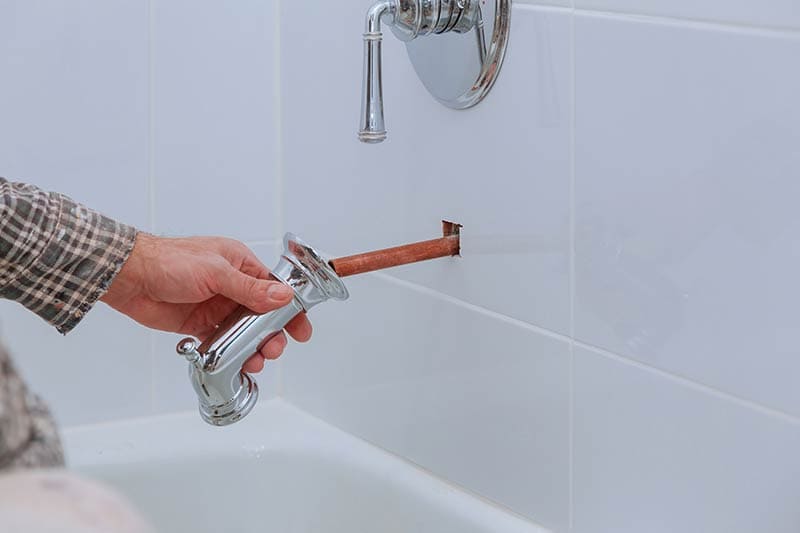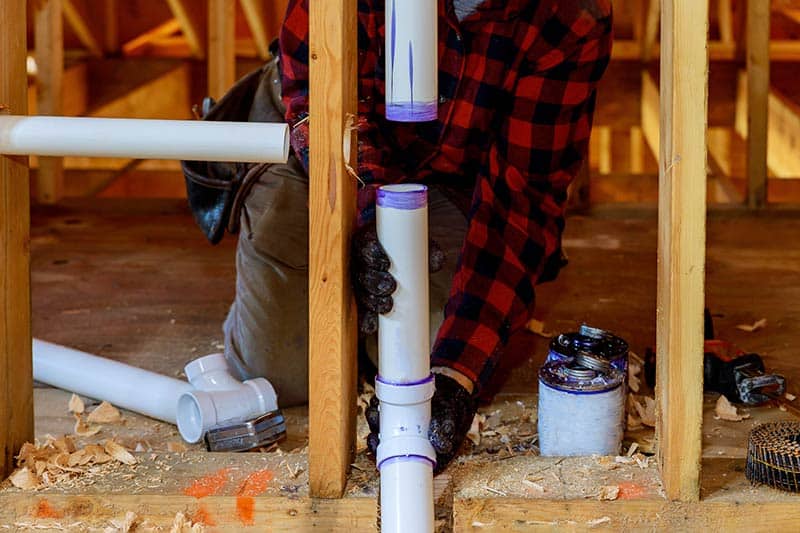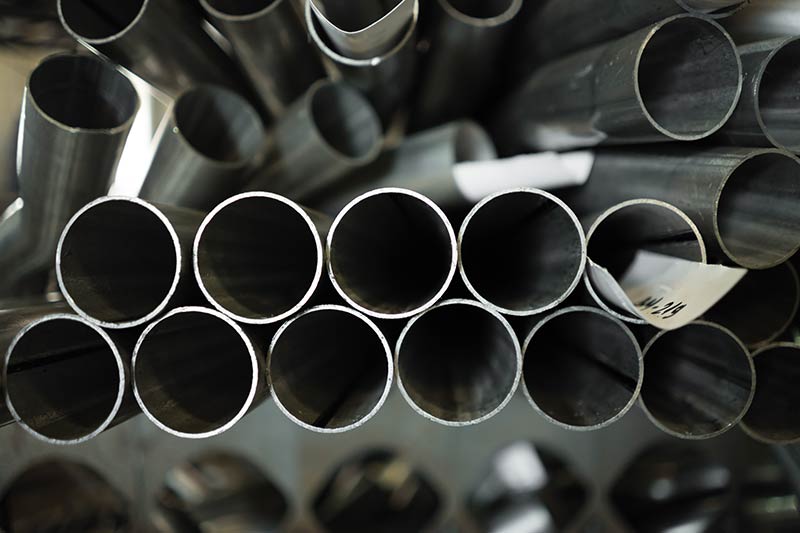Understanding the Different Types of Plumbing Pipes

Whether you’re building a new home, renovating an existing property, or simply facing a plumbing repair, understanding the various types of plumbing pipes available is crucial for making informed decisions. The pipes running through your walls and under your floors are the lifelines of your property, delivering clean water and removing waste efficiently.
Different pipe materials serve different purposes in your plumbing system, and choosing the right ones can significantly impact water quality, system longevity, and long-term maintenance costs.
Your plumbing system is an investment that should last for decades. Depending on what type of plumbing pipes you install, it can save you thousands in future repairs and replacements. Quality Plumbing is here to break down the most common pipe materials used in modern plumbing systems, their advantages, and considerations to help you make the best choice for your specific needs.
Types of Plumbing Pipes: Copper Pipes
Copper has long been considered the premium choice for plumbing systems, and for good reason. These pipes are extremely durable, often lasting 50+ years when properly installed. They’re commonly used for hot and cold water lines and refrigerant lines in HVAC systems. With copper pipes, you can expect:
- Naturally resistant to corrosion
- Can withstand extreme temperatures without degrading
- Feature a biostatic surface that inhibits bacterial growth
- Reliable performance in virtually all plumbing applications
However, copper isn’t without considerations. The initial cost is significantly higher than that of plastic alternatives, and installation requires skilled labor with soldering expertise. Despite these factors, many professionals still consider copper the most reliable option for main water supply lines.
[Related: Common Problems in Plumbing]
Types of Plumbing Pipes: PEX
Cross-linked polyethylene, commonly known as PEX, has revolutionized residential plumbing in recent decades. These highly flexible plastic pipes have become increasingly popular for indoor water supply lines and radiant floor heating systems. This type of plumbing pipe offers several compelling advantages, such as:
- Exceptional flexibility allows for fewer connections and fittings
- Resistant to freezing and scale buildup
- Color-coded for easy identification (red for hot, blue for cold)
- Significantly lower cost than copper
- Simple installation with specialized tools
The flexibility of PEX allows it to navigate around obstacles without additional fittings, reducing potential leak points. However, it’s important to note that PEX is not suitable for outdoor applications due to UV sensitivity, and unlike some other types of plumbing pipes, it cannot be recycled at the end of its useful life.
Types of Plumbing Pipes: PVC

Polyvinyl chloride (PVC) is perhaps the most common plastic piping in residential plumbing. These white plastic pipes are primarily used for drain lines, vent stacks, and irrigation systems. PVC pipes offer several benefits:
- Affordable and lightweight
- Highly resistant to chemical damage
- Easy to cut, join, and install
- Available in various diameters for different applications
The main limitation of PVC is its temperature restriction—it’s not rated for hot water applications and becomes unstable at temperatures above 140°F. Additionally, some environmentally conscious homeowners have concerns about PVC’s manufacturing process and disposal. Despite these considerations, PVC remains one of the most widely used types of plumbing pipes for drain and waste applications due to its reliability and cost-effectiveness.
Types of Plumbing Pipes: CPVC
Chlorinated polyvinyl chloride (CPVC) is an enhanced version of PVC specifically designed to handle hot water applications. These cream-colored pipes are commonly used for both hot and cold water supply lines. CPVC provides several advantages:
- Can safely handle temperatures up to 180°F
- Excellent chemical and corrosion resistance
- More affordable than copper alternatives
- Familiar installation process similar to PVC
However, CPVC is more brittle than flexible options like PEX, which can be a consideration in regions with shifting soil or extreme temperature fluctuations. Some homeowners also express concerns about potential chemical leaching, though modern CPVC is manufactured to strict safety standards. For properties where budget constraints make copper prohibitive, CPVC offers a reliable alternative for hot water distribution systems.
Types of Plumbing Pipes: ABS
Acrylonitrile butadiene styrene (ABS) pipes are easily recognizable by their solid black color. These rigid plastic pipes excel in drain-waste-vent (DWV) systems and sewer lines. ABS pipes stand out for their:
- Superior impact resistance, even in cold temperatures
- Simple installation using solvent cement
- Lightweight yet strong construction
- Excellent performance in below-ground applications
It’s worth noting that not all local building codes permit ABS, so checking regulations before installation is essential. Additionally, prolonged exposure to direct sunlight can cause warping in ABS pipes. When permitted by local codes, ABS provides excellent performance for waste removal systems, particularly in colder climates where its impact resistance is especially valuable.
Types of Plumbing Pipes: Cast Iron
Cast iron pipes have been used in plumbing systems for generations, particularly for main sewer lines and soil stacks. While less common in new construction due to cost and weight, they offer exceptional durability. The benefits of cast iron include:
- Extraordinary longevity (50-100 year lifespan)
- Superior sound dampening for quiet waste flow
- Excellent fire resistance
- Time-tested reliability
The primary drawbacks are the significant weight, which makes installation labor-intensive, and the eventual susceptibility to rust over very long periods. Cast iron is also considerably more expensive than plastic alternatives for similar applications. For homeowners particularly concerned about minimizing noise from waste lines or those seeking maximum durability in critical sewer connections, cast iron remains a premium option worth considering.
[Related: Understanding and Addressing Main Sewer Line Clogs]
Types of Plumbing Pipes: Galvanized Steel

Galvanized steel pipes were the standard for water supply lines in homes built before 1960. While rarely installed in new construction, understanding these pipes is important for owners of older properties. When new, galvanized steel offers:
- Excellent strength and durability
- Good resistance to physical damage
- Reliable performance under pressure
However, these pipes are prone to internal corrosion over time, which can lead to reduced water pressure, discoloration, and eventually leaks. Many plumbing professionals now specialize in replacing these aging systems with modern alternatives. If your home still has galvanized steel pipes that are several decades old, consulting with a professional about replacement options is advisable before serious problems develop.
Types of Plumbing Pipes: Stainless Steel
For those seeking the ultimate in durability and corrosion resistance, stainless steel pipes represent a premium option. These pipes are particularly valuable in coastal areas where water conditions might be corrosive to other materials. Stainless steel pipes offer:
- Unmatched corrosion resistance
- Ability to handle high temperatures
- Attractive appearance for exposed installations
- Exceptional longevity
The primary consideration is cost—stainless steel is significantly more expensive than most other types of plumbing pipes. Installation also requires specialized techniques and fittings. For applications where appearance matters or in environments with particularly challenging water chemistry, stainless steel provides unmatched performance and aesthetic appeal.
Types of Plumbing Pipes: Brass
Brass pipes, a copper alloy with a distinctive golden appearance, have been used in plumbing systems for generations. They’re commonly found in water supply lines and pump fittings. Brass pipes are valued for their:
- Excellent corrosion resistance
- Natural antimicrobial properties
- Attractive appearance for visible installations
- Long service life
Like copper, brass comes with a higher price tag than plastic alternatives. It’s also worth noting that brass pipes manufactured before 2014 may contain lead, which could be a health concern. For visible plumbing installations where aesthetics matter, this type of plumbing pipe provides a warm, elegant appearance along with reliable performance.
Making the Right Choice for Your Plumbing Needs
When selecting the appropriate types of plumbing pipes for your property, several factors should guide your decision:
- Local building codes and regulations
- Water chemistry in your area
- Budget constraints
- Long-term maintenance expectations
- Environmental concerns
The right choice often involves using different materials for different applications within the same plumbing system. For example, PEX might be ideal for water supply lines, while PVC serves perfectly for drain systems. Consulting with a professional plumber who understands local conditions and regulations can help you make the most informed decision when choosing which type of plumbing pipes you need for your property.
[Related: The Cost of Ignoring Pipe Leaks: Why You Need Leaking Pipe Repair]
Contact Quality Plumbing for Expert Plumbing Solutions
When it comes to selecting the right types of plumbing pipes for your property, the choices can seem overwhelming. Quality Plumbing offers personalized guidance based on your specific property, local water conditions, and budget considerations.
Beyond consultation, our expert installation services ensure that your new pipes are properly fitted, securely connected, and built to last for decades. Whether you’re building a new home, renovating an older property, or simply need to replace a problematic section of piping, don’t leave this crucial decision to chance. Call Quality Plumbing for the peace of mind that comes from working with the expert plumbing professionals in the Kansas City area.

